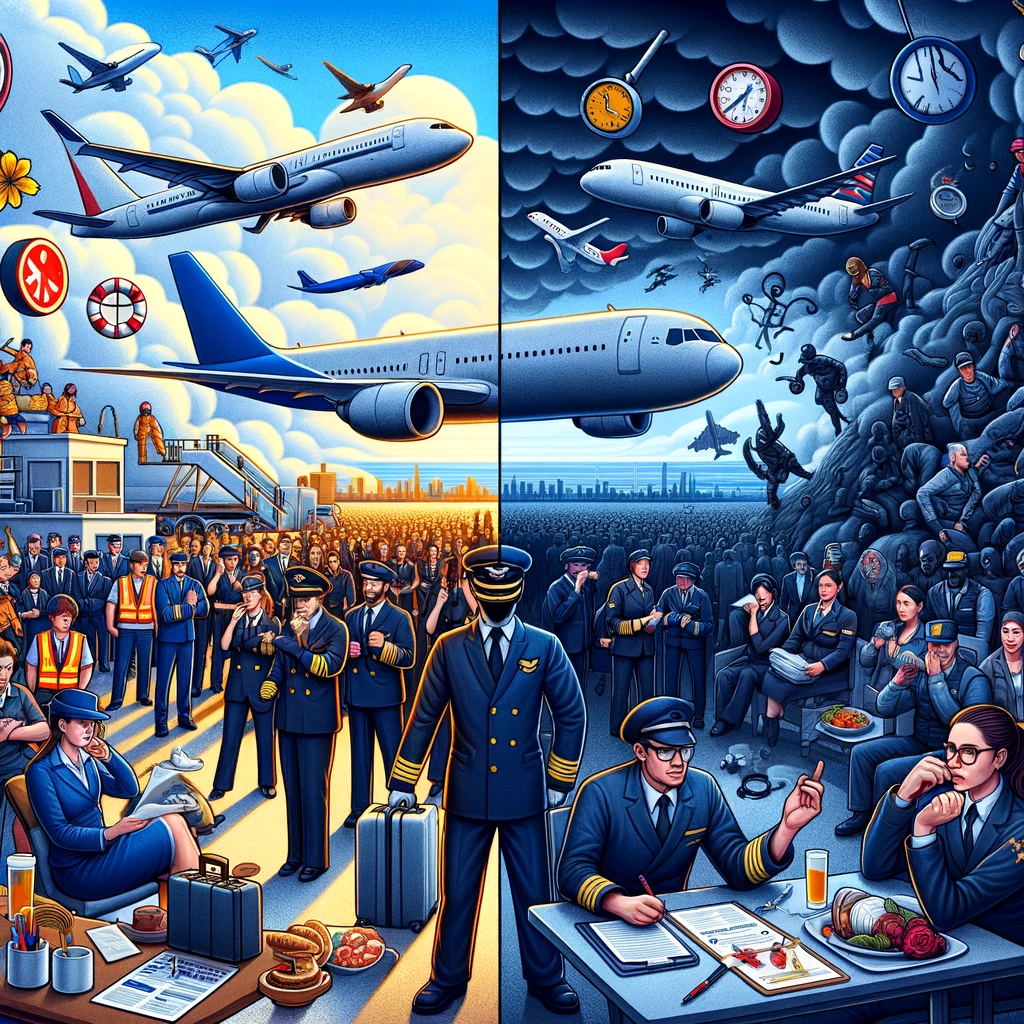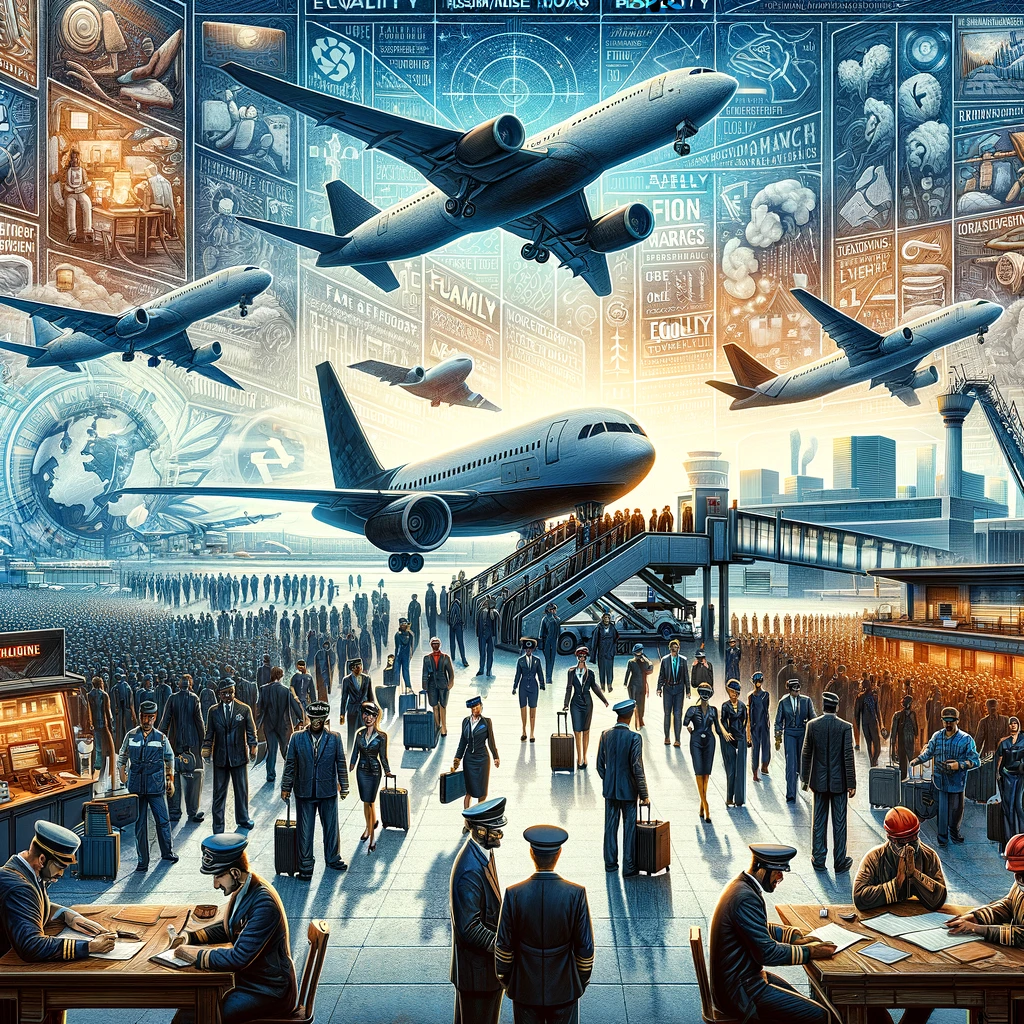Aviation Labor Laws: High Altitude Employment

The aviation industry, a sector characterized by its global reach and technological sophistication, is also a field defined by its unique employment dynamics. From pilots and flight attendants to ground crew and engineers, the workforce that propels this industry forward operates under a set of labor laws that reflect the unique challenges and responsibilities of aviation-related occupations.

This exploration into aviation labor laws offers a panoramic view of the high-altitude employment landscape, highlighting the legislative frameworks that govern work in the skies and on the ground.
The Framework of Aviation Labor Laws
The regulatory environment of aviation labor is an intricate mosaic of international conventions, national legislation, and collective bargaining agreements. At the international level, the International Labour Organization (ILO) provides guidelines and conventions that influence national labor laws affecting aviation workers worldwide. These global standards address issues such as working hours, safety and health, and employment conditions, ensuring a foundational level of protection for workers in the aviation sector.
Collective Bargaining and Union Representation
A distinctive feature of labor relations in the aviation industry is the prominent role of unions and collective bargaining. Pilots, cabin crew, and many other aviation workers are often represented by unions that negotiate collective bargaining agreements (CBAs) with employers. These agreements cover a wide range of employment terms, including wages, working hours, rest periods, job security, and benefits. The negotiation process between unions and airlines or airport operators is a critical mechanism for addressing labor concerns and adapting to the evolving demands of the industry.

Safety and Health Regulations
Given the inherently risky nature of aviation operations, labor laws in this sector place a significant emphasis on safety and health. Regulations cover a broad spectrum of concerns, from the prevention of accidents and injuries to the management of fatigue and the provision of protective equipment. The Federal Aviation Administration (FAA) in the United States, the European Union Aviation Safety Agency (EASA) in Europe, and other national aviation authorities enforce strict standards for safety and health, directly impacting employment practices in the industry.
Working Hours and Rest Requirements
The unique operational demands of the aviation industry necessitate specific regulations concerning working hours and rest periods for crew members. Laws and regulations, often informed by scientific research on circadian rhythms and fatigue, stipulate maximum flight duty periods, minimum rest times between shifts, and annual leave entitlements. These rules are designed to mitigate fatigue and ensure that personnel are adequately rested and alert during their duties, safeguarding both workers and passengers.

Discrimination and Equal Opportunity
Labor laws in the aviation sector also address issues of discrimination and equal opportunity in employment. Legislation in various countries prohibits discrimination based on age, gender, race, religion, national origin, or sexual orientation in hiring, promotion, and other aspects of employment. Additionally, the industry has seen progressive policies aimed at increasing diversity and inclusivity within its workforce, reflecting broader societal commitments to equality and fairness.
Emerging Challenges and Adaptations
The aviation industry is no stranger to change, with technological advancements, economic fluctuations, and global events continually reshaping the landscape of aviation labor. The rise of low-cost carriers, the impact of digital technologies on employment, and the unprecedented challenges posed by the COVID-19 pandemic have all necessitated adaptations in labor laws and employment practices. As the industry evolves, so too will the legal frameworks that protect and regulate the work of aviation professionals.
Labor laws in the aviation industry are tailored to address the unique environment in which aviation professionals operate. From safety and health regulations to collective bargaining agreements, these laws ensure that the rights and well-being of workers are safeguarded amidst the complexities of global aviation operations. As the industry continues to navigate the challenges of the 21st century, the evolution of aviation labor laws will remain a critical area of focus, ensuring that high-altitude employment remains governed by principles of fairness, safety, and respect for the workforce that keeps the world connected.
Source

Leave a Reply